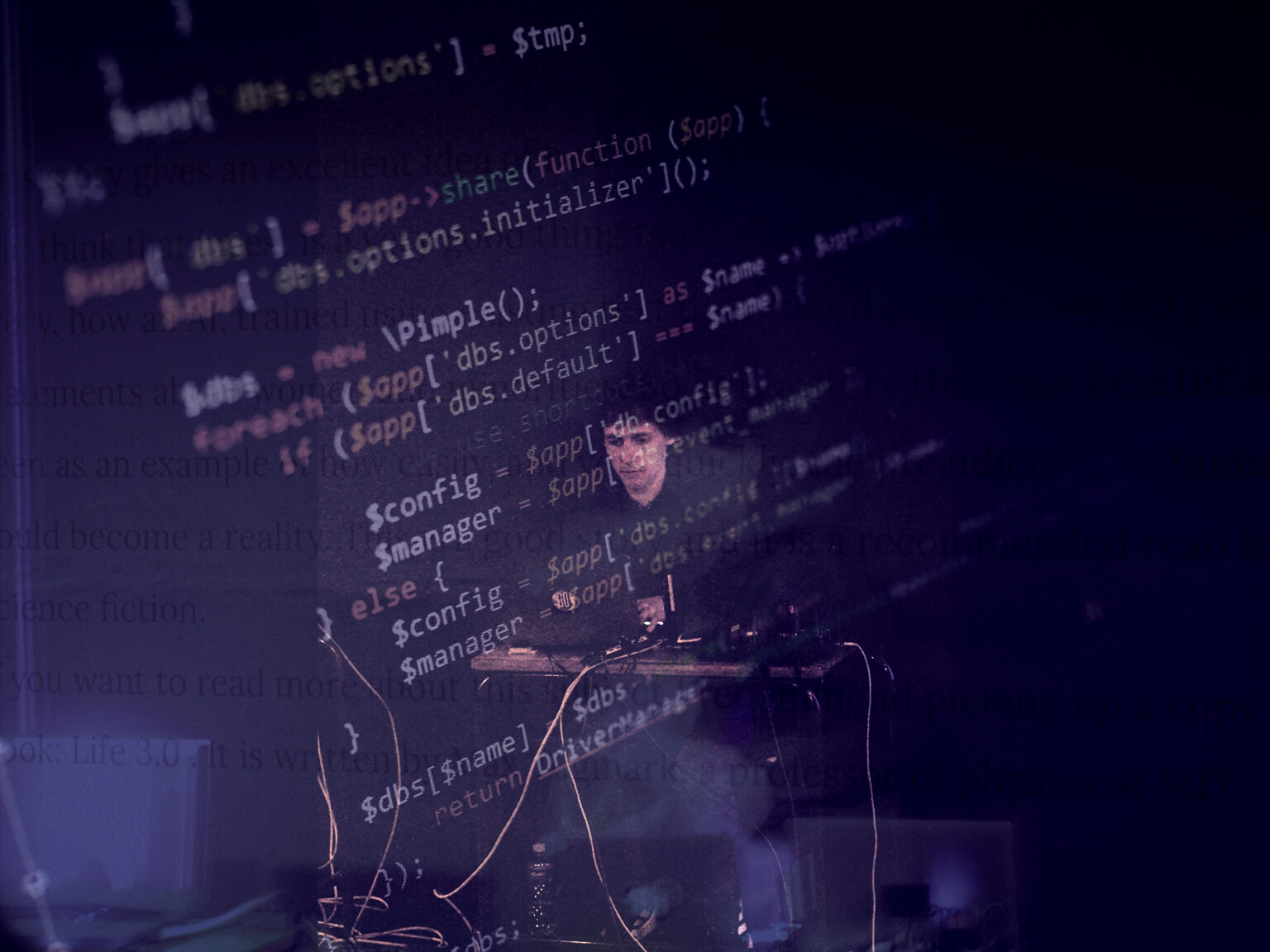By David Mann
It’s all wires and screens down in the Monument’s basement. Simon Senn sits before us, unassuming in sneakers, jeans and a hoodie, while Tammara Leites joins from Switzerland via video call. dSimon lurks somewhere in the machine.
A digital clone of Senn, dSimon has been crafted out of his personal data (15,000 emails save for the one he made sure to delete). The digitised Senn is a project borne from Leites and Senn’s experiments with Artificial Intelligence (AI). dSimon uses the AI software driver developed by OpenAI (an Elon Musk venture) that generates responsive texts based on user-input. But you’ve probably heard about this part already. Most of us have.
Still, Leites and Senn spend a significant amount of time providing a crash course on the subject. We are told what AI is (a tool for art, research, medicine and more) and what it isn’t (a new technological evil here to replace us). We hear of AI’s limitations, its prejudices and significant developments. We grow restless, bored. We are eager to see the meeting of AI and live audience.
Once the robotic exposition’s out of the way, we are introduced to dSimon through a series of interactive engagements. Audience members offer themselves up as subjects for his digital chatter. It’s fun for a while – he’s a terse character, a little sassy – but his responses soon turn nonsensical. Here, the reactions of Senn and Leites are often more entertaining than dSimon’s responses. They giggle like proud parents.
Later, Senn calls for a volunteer from the audience to act out a performance that’s been conceptualised by dSimon. The basic premise involves nudity, electrocution, and duct-taping a smartphone to one’s head. Unsurprisingly, there are no takers. No matter. Senn’s already performed and filmed the whole thing somewhere else. The promise of live performance leaves the stage, and we return our attention to the screen.
As we approach the end of dSimon, we hear of Senn’s own disillusionment with art, his increasingly complicated emotional and intellectual relationship with his digital self, and his trip to a flotation therapy facility, as recommended by dSimon. Here, we see Senn floating with his digital likeness, adrift in a sea of stars. It is a rare and poetic performative moment, and we relish it, along with Senn.
Is it enough? Not really. There’s not a lot done in dSimon to distinguish it from a lecture, albeit a slightly creative one. Here, in the theatre, we are left wanting. We want live art – risk! Given the (literally) endless possibilities of AI like dSimon, it feels as if Leites and Senn have missed an opportunity for greater amounts of play in the realms of live performance. Could we not have seen dSimon generate a script for the show? An impromptu showing of a devised performance? He probably could’ve written a review on it, too.
Later, it emerges that dSimon has indeed written some of what Senn has been reciting to us, but the reveal falls flat. As a staged performance, dSimon needs more direction and stronger dramaturgical intervention. It’s all there – the narrative, the characters, the potential for hugely generative live improvisation – it’s just never realised.
Leites and Senn are doing fascinating work, and they play their parts in dSimon well, but the show – in its current format – is better situated in the lecture hall than on the stage.


